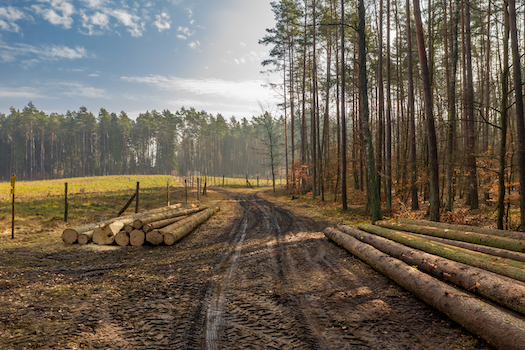Time for Ottawa to protect endangered Pacific salmon and steelhead
 Aaron HillBy Aaron Hill
Aaron HillBy Aaron Hill
 Aaron Hill
Aaron HillAaron Hill is the Executive Director of the Watershed Watch Salmon Society, writing in collaboration with the B.C. Wildlife Federation and the B.C. Federation of Fly Fishers.
When it comes to protecting species at risk, like British Columbia’s iconic salmon and steelhead, Canadian officials are long on talk, but short on action.
So how will Canada choose to portray itself at COP15, the UN conference on biodiversity now taking place in Montreal? Will our officials assure us all is well in our salmon fisheries? Will they try to convince us that their current recovery strategies for Pacific salmon are working? (Spoiler: they’re not.)
Or, with the eyes of the world on them, will they try to avoid the issue altogether? Those of us who have worked for decades on salmon conservation in B.C. are not letting our federal government off the hook.
Wild Pacific salmon and salmon-like steelhead trout are declining due to a combination of factors that include climate change, overfishing, habitat destruction and pathogens from salmon farms. These declines are devastating for the wildlife that depend on salmon for their survival, and for the many people here who depend on salmon for their food, prosperity and culture.
That’s why Prime Minister Justin Trudeau needs to direct his ministers of fisheries and environment to pull the biggest policy lever they have: protecting endangered salmon runs under Canada’s Species at Risk Act.
Just two months ago, Canada’s Environment Commissioner, Jerry DeMarco, tabled a report in the House of Commons scolding Fisheries and Oceans Canada for not adequately protecting aquatic species at risk, and demonstrating a bias against protecting species of commercial value (such as salmon).
DeMarco is not wrong. The Canadian government’s failure to use its Species at Risk Act to protect and recover wild Pacific salmon and steelhead is a national disgrace, as is its failure to enact recovery plans.
Pacific salmon and steelhead listed as “endangered”
Here’s the cold truth. Since 2017, two dozen populations of Pacific salmon and steelhead have been designated as endangered by the government’s Committee on the Status of Endangered Wildlife in Canada.
This designation makes populations eligible for legally mandated protection and recovery planning under Canada’s Species at Risk Act. But to do so requires a decision by our federal cabinet, which has never listed a salmon population under the Species at Risk Act.
But it’s much worse than that: the government has explicitly declined this protection to four salmon populations (Thompson and Chilcotin River steelhead and Cultus and Sakinaw Lake sockeye).
Spring spawning steelhead numbers in the Chilcotin were estimated at 19 fish, while the Thompson River population was estimated at 104 – the lowest number since records began in 1978.
In the case of Thompson and Chilcotin steelhead, the decision to not list these species was influenced by federal fisheries bureaucrats watering down their own scientists’ conclusions about the impact of fishing on the species’ prospects for recovery.
The delays and deference to industry need to stop. These 24 endangered salmon and steelhead populations need immediate protection under Canada’s Species at Risk Act.
Other policy levers for Pacific salmon recovery are also being neglected. Official recovery plans for endangered salmon and steelhead are required under Canada’s new Fisheries Act, and under our 17-year-old Wild Salmon Policy. But none exist.
Canada’s new Pacific Salmon Strategy Initiative is putting up $647 million for salmon recovery and has funded some worthy habitat restoration and science projects.
But under this five-year initiative, our government doesn’t aim to identify “priority stocks” until year three, and won’t have rebuilding plans for those stocks “actioned” until the fifth and final year, after most of that taxpayer money will have been spent.
Salmon are resilient and there are win-win solutions available to help them thrive. For example, outdated fishing practices, like the use of gill nets that kill endangered stocks in mixed-stock fisheries, can be replaced with selective fishing methods like fish wheels and fish traps.
Vast areas of critical floodplain habitat can be reopened to salmon using fish-friendly flood control technology. Fish farms can be moved onto land where their pathogens can’t be transmitted to wild salmon.
Listing B.C.’s endangered salmon and steelhead populations under the Species at Risk Act would kickstart these transitions.
Opportunities for innovation and investment
Canadians have seen this movie before, with East Coast cod, and if we allow our elected leaders to continue with their current half-measures, the sequel will feature Pacific salmon and steelhead.
On the 20th anniversary of the Species At Risk Act, it’s time for the Prime Minister and his ministers of fisheries and environment to use our most powerful conservation tool to show the world that by protecting endangered keystone species, Canada makes decisions based on science and evidence, not politics.
Continuing pressure on dwindling salmon populations and the federal government’s self-imposed deadline of 2025 to transition away from open-net aquaculture will combine to create real opportunities for innovation, particularly in land-based and closed-containment salmon farming. Opportunities also exist around the federal commitment to transform wild capture fisheries.
In 2022, for the first time ever, a First Nations-owned in-river selective fishery (Talok Fisheries LP in Burns Lake, B.C.) recorded B.C.’s largest annual commercial sockeye salmon catch, landing 565,000 fish.
Farm gate sales from aquaculture in B.C. total roughly $750 million a year, while the seafood industry supports 4,900 direct jobs. Senior governments are not keen to throw away a major economic generator, so innovation and investment are likely to be prioritized.
At COP15, the federal government must back up its lofty goals with meaningful action to save B.C.’s iconic salmon and steelhead trout populations from the brink of extinction.
R$
| Organizations: | |
| People: | |
| Topics: |
Events For Leaders in
Science, Tech, Innovation, and Policy
Discuss and learn from those in the know at our virtual and in-person events.
See Upcoming Events
You have 0 free articles remaining.
Don't miss out - start your free trial today.
Start your FREE trial Already a member? Log in
By using this website, you agree to our use of cookies. We use cookies to provide you with a great experience and to help our website run effectively in accordance with our Privacy Policy and Terms of Service.





